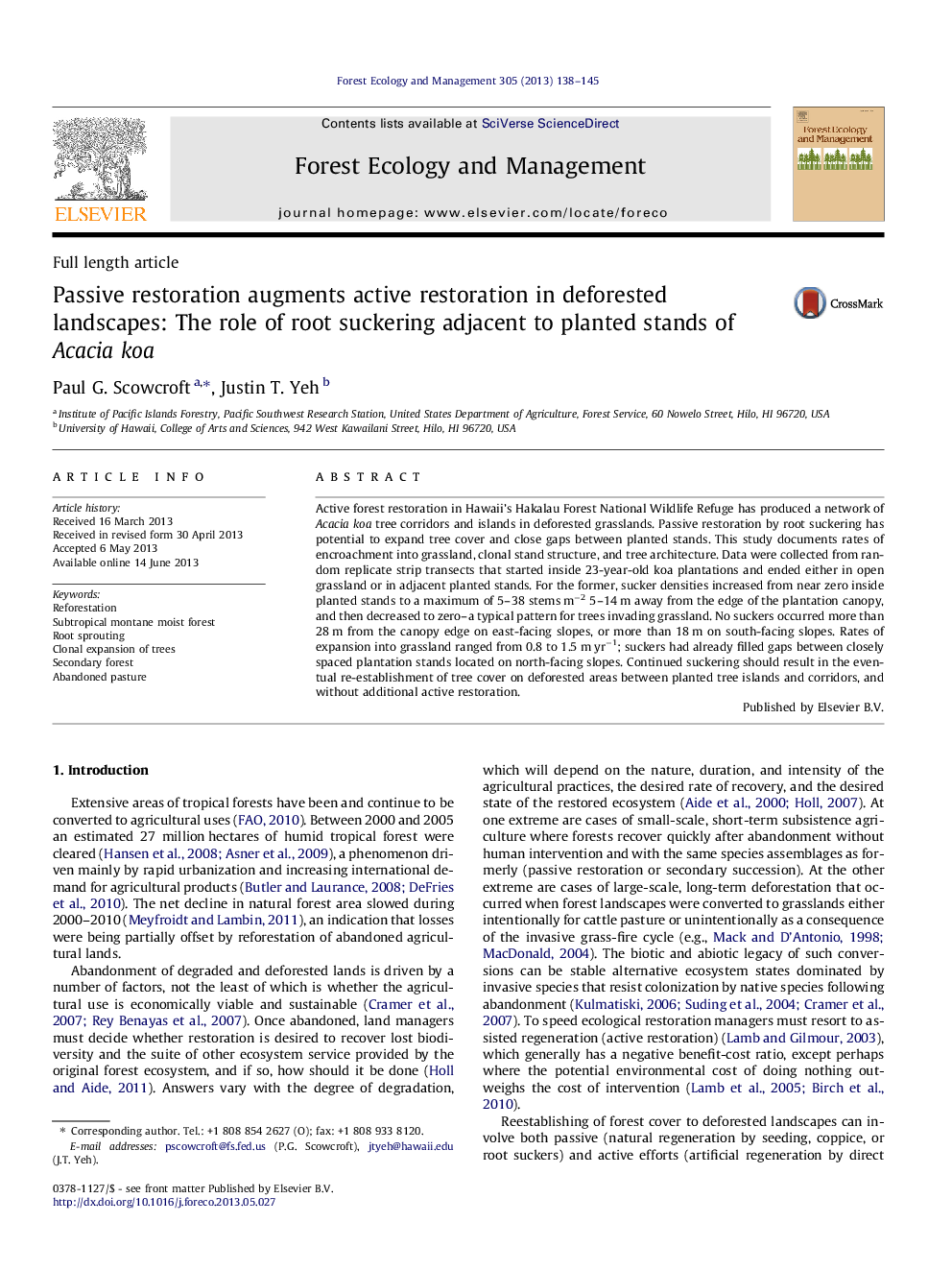| Article ID | Journal | Published Year | Pages | File Type |
|---|---|---|---|---|
| 86814 | Forest Ecology and Management | 2013 | 8 Pages |
Abstract
Active forest restoration in Hawaii's Hakalau Forest National Wildlife Refuge has produced a network of Acacia koa tree corridors and islands in deforested grasslands. Passive restoration by root suckering has potential to expand tree cover and close gaps between planted stands. This study documents rates of encroachment into grassland, clonal stand structure, and tree architecture. Data were collected from random replicate strip transects that started inside 23-year-old koa plantations and ended either in open grassland or in adjacent planted stands. For the former, sucker densities increased from near zero inside planted stands to a maximum of 5-38 stems mâ2 5-14 m away from the edge of the plantation canopy, and then decreased to zero-a typical pattern for trees invading grassland. No suckers occurred more than 28 m from the canopy edge on east-facing slopes, or more than 18 m on south-facing slopes. Rates of expansion into grassland ranged from 0.8 to 1.5 m yrâ1; suckers had already filled gaps between closely spaced plantation stands located on north-facing slopes. Continued suckering should result in the eventual re-establishment of tree cover on deforested areas between planted tree islands and corridors, and without additional active restoration.
Related Topics
Life Sciences
Agricultural and Biological Sciences
Ecology, Evolution, Behavior and Systematics
Authors
Paul G. Scowcroft, Justin T. Yeh,
